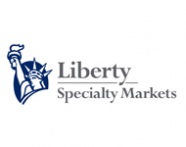Protecting Intellectual Property in the new world order

Authored by Liberty Specialty Markets Stategic Assets Underwriting Manager Matthew Hogg and Underwriter Edward Cartwright
In the new world order ushered in by COVID-19, innovation, competition and litigation are likely to increase as businesses adapt to new ways of working and focus on building and protecting market share. In the aftermath of the pandemic, as recessionary forces start to bear down, businesses need to consider how they protect their assets.
With intellectual property (IP) now such an established and potent force in a global economy where intangible assets account for 75% of business value, it is surprising that many businesses are under-insured or even uninsured for risks relating to IP. At best, surveys have shown that a mere 13% of businesses have any form of patent insurance cover that would protect them against infringement allegations. This lack of protection -as we think 13% grossly inflates actual take-up levels- is particularly concerning when we consider what may be around the corner in terms of IP risk.
IP cases set to rise
In the recession which followed 2008– 2009’s financial crisis, there was a boom in patent infringement filings.
After fighting to obtain market share, larger companies were keen to hold on to that advantage. Smaller businesses likewise were highly focused on value generation – and equally keen to protect their new ventures from threats.
Although we are still adapting to the impact of COVID-19, it is possible that the courts around the world will become similarly busy as recession looms in 2021 and beyond.
For example, patent owners who had planned to file cases later in the year may decide to accelerate the timetable in light of potential further lockdowns of businesses. Likewise, if businesses fear their best days are behind them, past damages claims may be stronger now than in the foreseeable future. Patent owners interested in competitive relief (injunction or settlement) might also be tempted to make their move now while the costs of litigation may force hard-pressed competitors to abandon products or services.
Another driver of litigation is the everpresent threat of patent enforcement businesses. In 2009, filings by so-called “high volume plaintiffs”– typically entities whose business model is simply to monetise patents – had remained constant for almost a decade at about 300 cases per year. That number increased to almost 400 in 2010, doubling to almost 900 cases in 2011, and then tripling to over 2,000 cases in 2012. It is not beyond the bounds of possibility that this kind of case will come to the fore again in 2021 and beyond.
At best, surveys have shown that a mere 13% of businesses have any form of patent insurance cover that would protect them against infringement allegations.
What to look out for?
Whatever form an IP threat assumes, businesses need to be prepared, particularly those operating in new industry sectors, or unfamiliar geographic territories. This is because the cost of litigation, any damages or settlements, plus loss in value of assets and contractual losses can be a substantial hit to a business’ bottom line.
In 2017, average US litigation costs alone (excluding damages settlements) were $1.7m, but have risen dramatically since then. Today they can reach anything up to $4m in high value cases, according to data produced by the American Intellectual Property Lawyer’s Association, AIPLA. While the scale of the damages is concerning, so too is the rate of increase. In the US, in 2020, at least nine awards for damages exceeded $100m in value.
Median damages awarded in patent infringement cases between 2012 and 2016 were $8.9m, but of course some individual losses were much higher.
Contractual losses are less well understood but represent a real Achilles’ heel any smart businesses would do well to protect against.
Take the case of Company X. It collaborates with Company Y in a manufacturing venture. However, Company Y’s product licences components from another business. If Company Y is sued by its component manufacturers, not only is Company Y at risk of patent infringement, but Company X, too. This would happen if Company Y is unable or unwilling to defend the patent case, instead seeking to pass the cost or burden onto Company X, irrespective of any hold harmless agreements that may be in place. Likewise, Company X may be sued direct by the patent owner for infringement of its IP.
Pitfalls to avoid
Unfortunately, the forces of globalisation, digitalisation and recession only increase the likelihood of IP litigation.
In the US, patent filings were up 27% in the second quarter of 2020 compared to the first quarter and approximately 16% over the half year - in part because of pandemic-induced financial pressures, investor interest in cheap patent assets (including those divested in recent bankruptcy proceedings in the retail and restaurant sectors) and also the ongoing attractiveness of the technology sector.
This means that smart businesses would do well to recognise that there is less security today in the IP value chain than there has ever been with a ticking timebomb of increased patents ripe for litigation.
What’s more, size is no defence. In fact, in many ways it can make businesses more of a target. This means there is little consolation in the hope that this kind of litigation is unlikely to happen to you.
It would be equally dangerous to assume that more general insurance policies will provide protection against IP threats. Although many supplier contracts require insurance, many traditional policies typically exclude some or all major IP exposures. While there may be some IP cover in merging lines, it is usually limited just to trademark, copyright and trade secrets. To achieve a meaningful level of protection, businesses are advised to seek advice on what cover would be appropriate – including IP contractual liability, IP value, IP defence (legal expenses) and IP enforcement/pursuit cover.
Role for risk managers
To manage IP risk effectively, it needs to be ‘baked in’ to thinking in every core business function – from R&D, through product approval, marketing, sales and distribution.
Although insurance for IP risk is most definitely a specialist purchase, it is undoubtedly a valuable source of risk transfer and value protection. Not only can it provide the financial firepower that enables businesses to avoid court (by demonstrating they have the funds to litigate and will protect their rights), it also serves to level the playing field in court if proceedings are unavoidable. Such protection and the freedom it brings could make the difference between bankruptcy and going concern.
As we look across the insurance market, capacity is growing and the cover is evolving. There is plenty of scope to script tailored wordings for those who are prepared to invest the time required to understand their exposures and work with their insurers to place themselves in the best possible position to withstand the mounting threats to their business that involve IP whether from others asserting their IP rights, or from an insured selling infringing products or services.
There is no doubt that the pandemic has impacted insurance markets around the world and dramatically accelerated the acceptance of digital approaches.
There is no doubt that the pandemic has impacted insurance markets around the world and dramatically accelerated the acceptance of digital approaches.
About Liberty
Liberty Specialty Markets offers specialty and commercial insurance and reinsurance products across key UK, European, Middle East, US and other international locations.
We provide brokers and insureds with a broad range of products through both the Company and Lloyd’s markets and have over 1,700 staff in approximately 65 offices. Liberty Specialty Markets was established in September 2013 bringing together Liberty’s company, syndicate and reinsurance operations into one combined operation, composed of three business units: Commercial, Specialty, and Reinsurance (Liberty Mutual Re). This integrated approach means brokers and clients can benefit from our global reach and operating efficiencies.
Liberty Specialty Markets is part of global insurer, Liberty Mutual Insurance Group, a diversified global insurer, formed in 1912 and headquartered in Boston, Massachusetts. Liberty Mutual is the 5th largest global insurer based on 2017 gross written premium, with over 50,000 employees in 30 countries and economies around the world. Our purpose is to help people embrace today and confidently pursue tomorrow. The promise we make to our customers throughout the world is to provide protection for the unexpected, delivered with care. We achieve this by offering a full range of personal, commercial, and specialty Property & Casualty insurance coverages. Our customers’ trust has earned us the 68th spot on the Fortune 100 list of largest corporations in the U.S., based on 2017 revenue.

